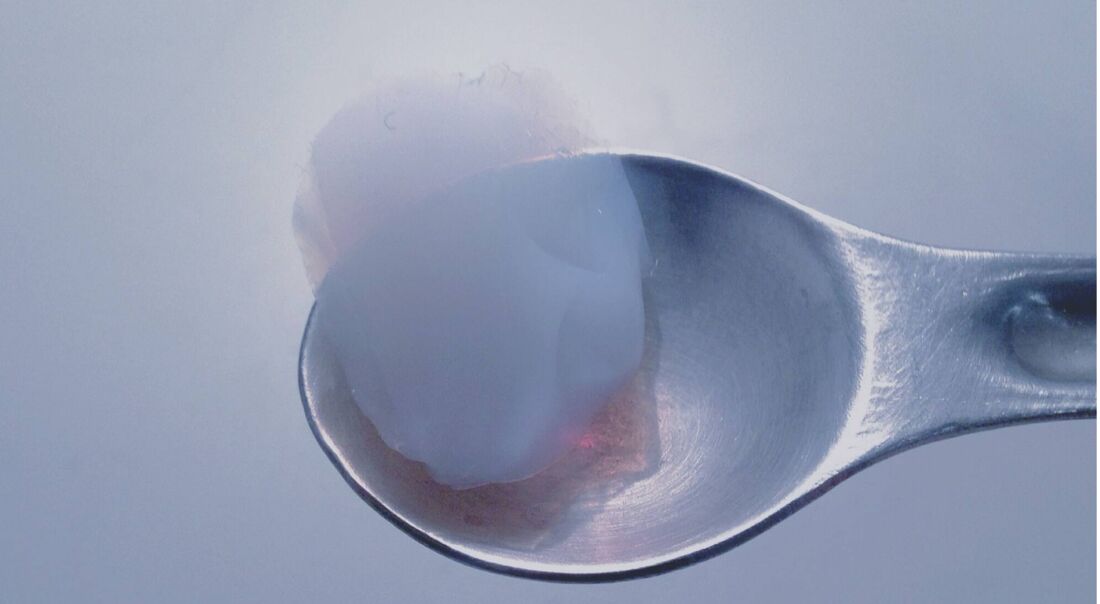
Aerogels
The lightweight solution for effective insulation
The effective insulation of buildings or cooling equipment is a decisive factor for energy efficiency. Thanks to their low weight and their outstanding insulation properties, aerogels are among the best insulants available today. Low-quality aerogels are often brittle, however – Dynasylan® SILBOND® from Evonik imparts the flexibility and stability that they need.
Aerogels are even listed in Guinness World Records
The structure of aerogels is similar to a sponge that has countless fine pores: Up to 99.98 percent of their total volume consists of air. While the pores are nanoscopic, the dimensions of their inner surface areas are impressive – if you were to spread out one single gram of aerogel, the surface area could cover an entire soccer field. This mixture makes aerogels super light, yet also highly stable.
Because the air is trapped in the pores, aerogels have extremely low thermal conductivity. They are also exceptionally temperature-resistant, even under extreme conditions that render other, conventional insulation materials ineffective. Thanks to these properties, silicate aerogels are one of the best insulants available today. They even made it into Guinness World Records as the “best insulator.”
This is thanks to their especially fine pore structure, which results in thermal conductivity that is up to three times lower than in many traditional insulation materials such as polystyrene. At the same time, solid material makes up just 0.2 percent by weight in an aerogel. This thus also virtually eliminates solid-state thermal conductivity.
However, it is not only the ability to retain heat that makes aerogels an ideal contender for an insulation material – they are also non-flammable and harmless to health. Because sound passes through aerogel poorly, the material also has good sound protection properties. An especially important factor for use as an insulant in buildings or industrial complexes is the ability of moisture to escape through the material’s sponge-like structure. This prevents damage to the fabric of the building.
Manufacturing aerogels
Silicate aerogels are conventionally manufactured using the sol-gel process. Here, silicate nanoparticles are produced in a liquid suspension, which then interconnect to form a continuous, porous nanostructure. The gels are then dried under supercritical conditions – If they are not sufficiently dried or if they contain pollutants, the mechanical stability and transparency of the aerogels is impaired.
Alkoxysilanes such as tetraethoxysilane (TEOS) are high-quality raw materials for silicate nanoparticles. Water glass gelation is an economic alternative. However, the pores still contain high levels of pollutants after drying when using the water glass technique. Without further purification and the use of additives, aerogels manufactured using this method are mechanically delicate and very fragile.
Dynasylan® SILBOND® makes aerogel blankets flexible and stable
For this reason, Dynasylan® SILBOND® products are often used to manufacture aerogel blankets. These products are based on tetraethoxysilane (TEOS) and result in high-quality silicate aerogels when used in the sol-gel process. After drying, the aerogel blankets manufactured using this method are flexible and easy to process thanks to the three-dimensional siloxane chains and their exceptional purity – you can roll them, cut them and attach them with dowels.
Alongside aerogel blankets, aerogel insulating plaster or lightweight concrete is also available. These products are ideal for refurbishing historic buildings, as they can also be used for restoration projects, and insulate just as effectively as conventional insulating panels.
But aerogels are not just suitable for insulation. These lightweight products are true all-rounders: Their ability to trap the smallest dust particles or gases makes them ideal for use in filters. What’s more, they can also be used as drying agents or solvents.
The benefits at a glance:
- The high purity of Dynasylan® SILBON® products results in ultrapure aerogels
- No subsequent purification of the aerogels necessary
- Aerogels feature outstanding insulation
- Aerogels have excellent mechanical properties: highly flexible, yet also stable
